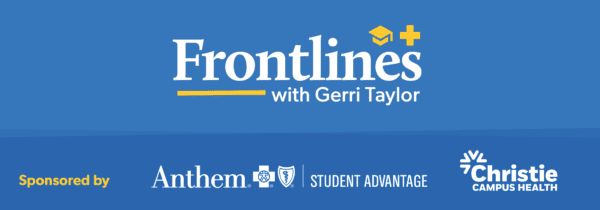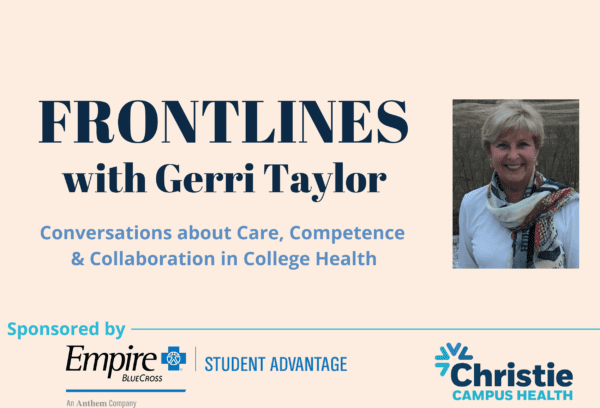
In a Mary Christie Op Ed last year, I wrote about the importance of studying the relationship between anxiety and suicide in college students in A Path Towards Identifying Suicide Risk Factors in College Students. Last month, I was excited to see my research in collaboration with Sarah Lipson and the Healthy Minds Study published in the Journal of American College Health.
A bit of background: It is absolutely crucial that we continue to devote money, time and effort towards studying suicide, particularly within the young adult population. Suicide is the second leading cause of death in college students. We are lacking as a field in our understanding of what puts college students most at risk for suicide. My research and clinical expertise is centered on treating anxiety, so it was natural for me to be curious about the relationship between anxiety and suicide. Most of the research conducted on suicide historically has focused on the relationship between depression, hopelessness, and suicide. However, given the gaps in our understanding about factors that increase one’s risk for attempting suicide, it is clear that we are missing an important part of the picture.
On account of this gap in our understanding, I set out to study the relationship between anxiety and suicide in college students with and without depression. I was also interested in identifying which specific anxiety symptoms would most predict suicidal ideation, and most importantly, suicide attempt. I analyzed data collected through the Healthy Minds Study survey, in which colleges can elect to participate. Data was analyzed from three collection waves from 2016-2019, which included a total of 184 unique institutions and 119,875 students. Subjects were between the ages 18-30 years old, 74% were pursuing their undergraduate degree, 71% were White and 56% were cis-gender female. Anxiety was measured through the Generalized Anxiety Disorder-7 scale and depression was measured through the Patient Health Questionnaire-9 (PHQ-9). Suicide was assessed with questions from the National Comorbidity Survey (NCS-R).
Results revealed that depression and anxiety were significantly correlated, meaning many people who are depressed are also anxious. Overall, our findings revealed alarming rates of anxiety, depression, and suicide in the college population. Over 17% of the college population reported moderate anxiety and over 13% reported severe anxiety. In addition, over 18% reported moderate depression, 10% reported moderately severe depression and 7% reported severe depression. More than 14% of students reported to have had suicidal ideation over the prior year and 1% reported a suicide attempt.
Of those with depression and zero to minimal anxiety, 23% reported suicidal ideation and 2% reported a suicide attempt. Of those with anxiety and no depression, 10% reported suicidal ideation and 1% reported an attempt. Of those with anxiety and depression, 35% reported suicidal ideation and 4% reported an attempt. These numbers are important, as they indicate that if we only screen for depression, we may identify approximately 23% of suicidal ideation in students, whereas if we also screen for anxiety, we may identify 35% of students with suicidal ideation. Depression remained a significant risk factor for suicidal ideation in the sample; however, most importantly, those with co-occurring positive screens for depression and anxiety had double the rates of suicide attempts than those with depression alone.
Overall, our findings revealed alarming rates of anxiety, depression and suicide in the college population.
In terms of specific symptoms, almost every anxiety item on the GAD-7 was correlated with suicidal ideation. We found the symptom “feeling afraid as if something awful might happen” was associated with two times higher odds of suicidal ideation. This item may reflect peoples’ feelings of hopelessness, which is in line with prior research findings on this topic. The symptoms “trouble relaxing” and “being so restless that it is hard to sit still” were significantly correlated with suicide attempts.
This finding fits with the research that has suggested that increased energy that comes from restlessness and agitation can increase the odds one acts on impulse. Interestingly, the symptom “feeling nervous, anxious or on edge” was significantly correlated with suicide attempt in the opposite direction, meaning the more one endorses feeling nervous, anxious or on edge, the less likely they are to have had a suicide attempt.
One possible explanation for this finding could be due to the relationship between anxiety sensitivity and suicide attempt. Anxiety sensitivity is when an individual notices physical sensations more often and is also more likely to interpret those symptoms as dangerous. As such, perhaps those who are more afraid of their symptoms are less likely to attempt suicide and the fear is in some way protective. More research is needed to explore this concept.
Ultimately, our findings suggest the importance of considering symptoms of anxiety as risk factors for suicidality. This is critical, as our study found that anxiety appears to compound the risk for suicide when added to depression, and perhaps even anxiety alone could also be an indicator of suicide risk.
There are many ways colleges can play a role in terms of prevention. Colleges would benefit greatly from having students fill out trainings at the beginning of the year, similar to sexual assault prevention and drinking trainings. Colleges can also screen students regularly for anxiety and depression symptoms. In addition, colleges can increase the number of available programs on campus, utilizing college-specific mental health groups such as Active Minds, National Alliance on Mental Illness, or the Reflect Organization. It is super important to provide early intervention and trainings for students to know what to do if a friend is at risk and where to refer people they’re concerned about. Finally, as this research was conducted from data collected prior to the pandemic, it would be interesting to follow up down the road to see how the pandemic has had an effect.



